3 Days 2 Night
Daily Tour
50 people
___
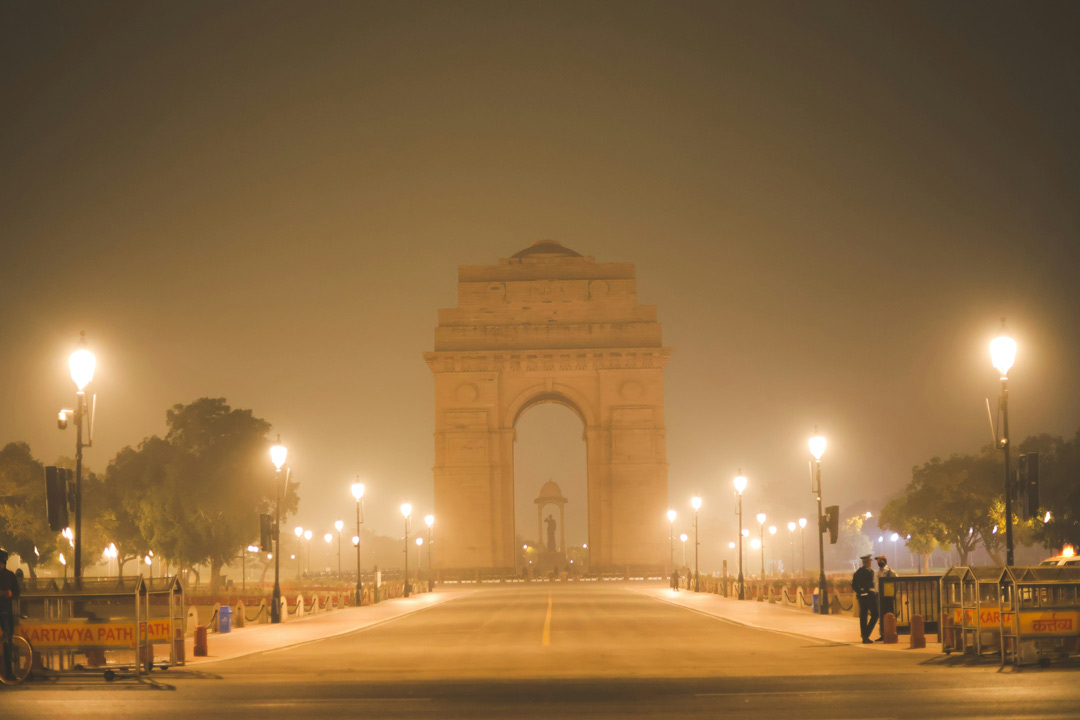
Distance: 472 km | Time: 9 to 10 hr | Altitude: 206m to 1500m
You will board your bus or cab in Delhi late evening for a drive to Dharamshala. The journey will take approximately 9 to 10 hours, and the following day, you will wake up to breathtaking views of the Dhauladhar ranges.
Meals: Nil
Night: Journey by Volvo Bus or Cab
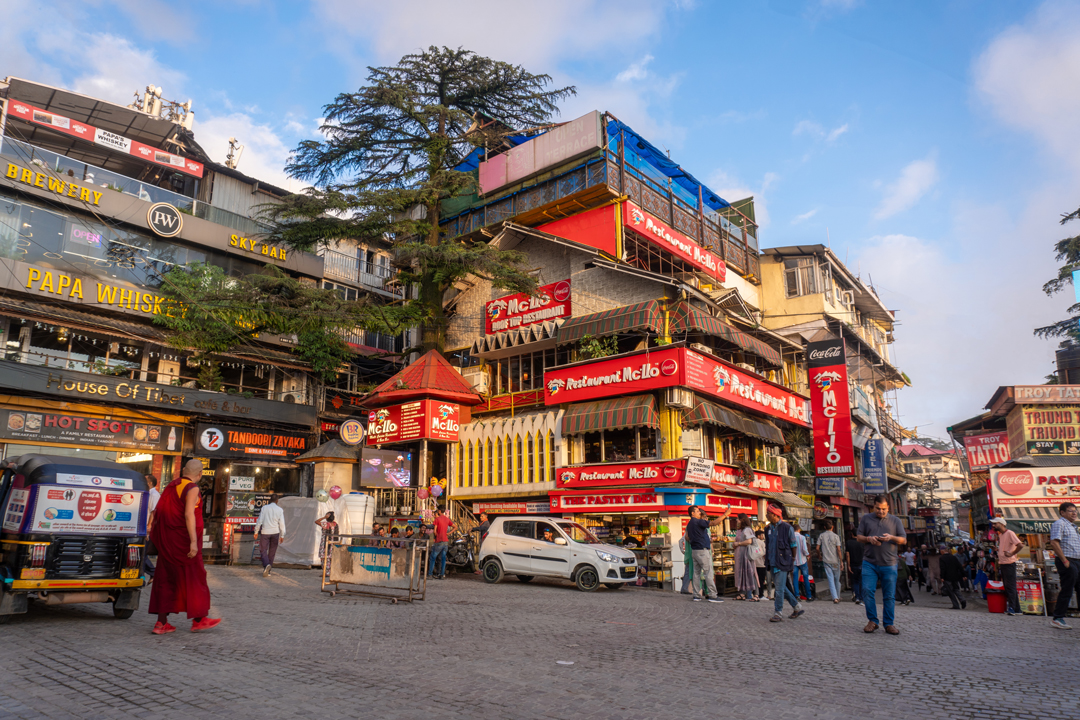
Arrival Time: 8:00 am | Check-In time: 11:00 am
Upon arrival, a cab will pick you up and drop you off at your hotel. After breakfast, you will go for a short trek to Bhagsu Waterfall. Later, you will visit Bhagsu Temple, St. John Church, the Dalai Lama Temple, and Namgyal Monastery.
Meals: Dinner
Night: Stay at the Hotel in Dharamshala
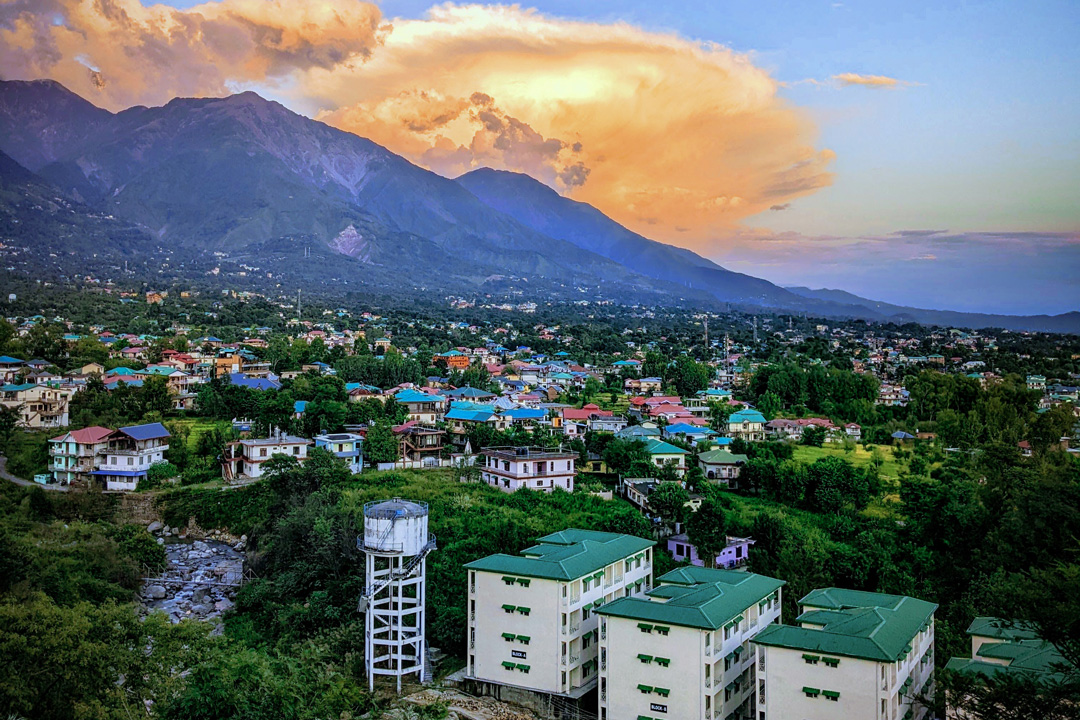
Sightseeing Time: 4 to 6 hrs
After waking up to a serene view, you will visit other places in Dharamshala, such as Tea Gardens, Shaheed Samarak, Cricket Stadium, Museum, Norbulingka Institute, and Gyuto Tantric Monastery.
Meals: Breakfast and Dinner
Night: Stay at the Hotel in Dharamshala
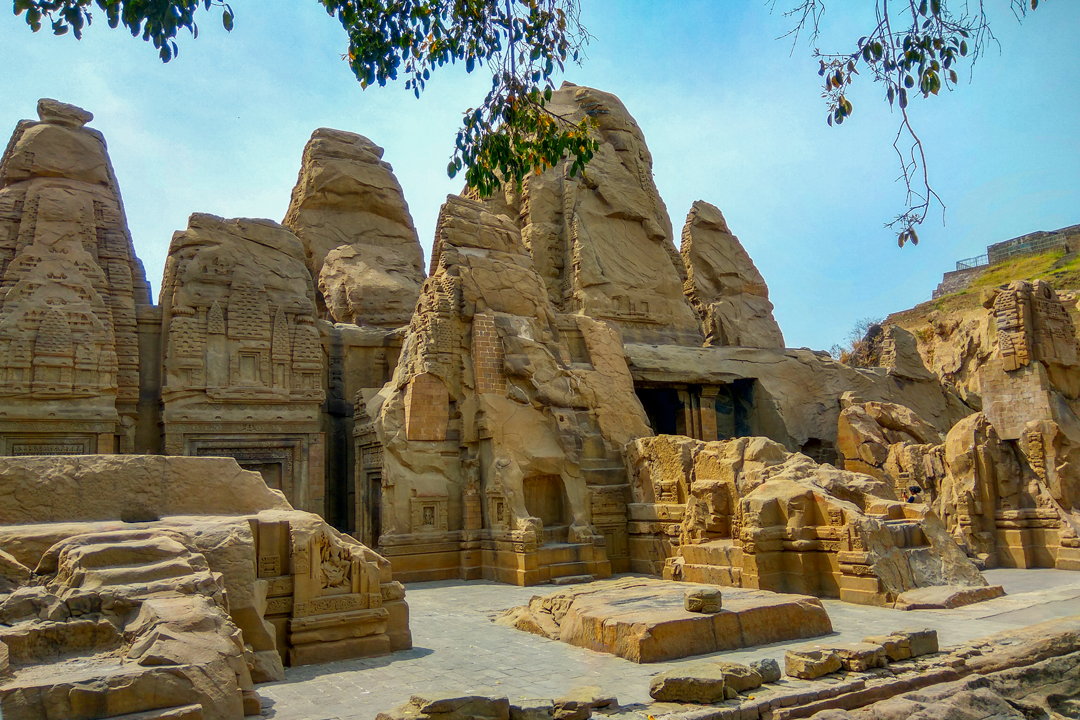
Sightseeing Time: 4 to 6 hrs
Start your day early with a visit to the Monolithic Rock Cut Temple at Masroor. Then, explore the historic Kangra Fort, constructed by the Katoch Dynasty. In the evening, you’ll depart for Delhi.
Meals: Breakfast
Night: Journey by Volvo Bus or Cab
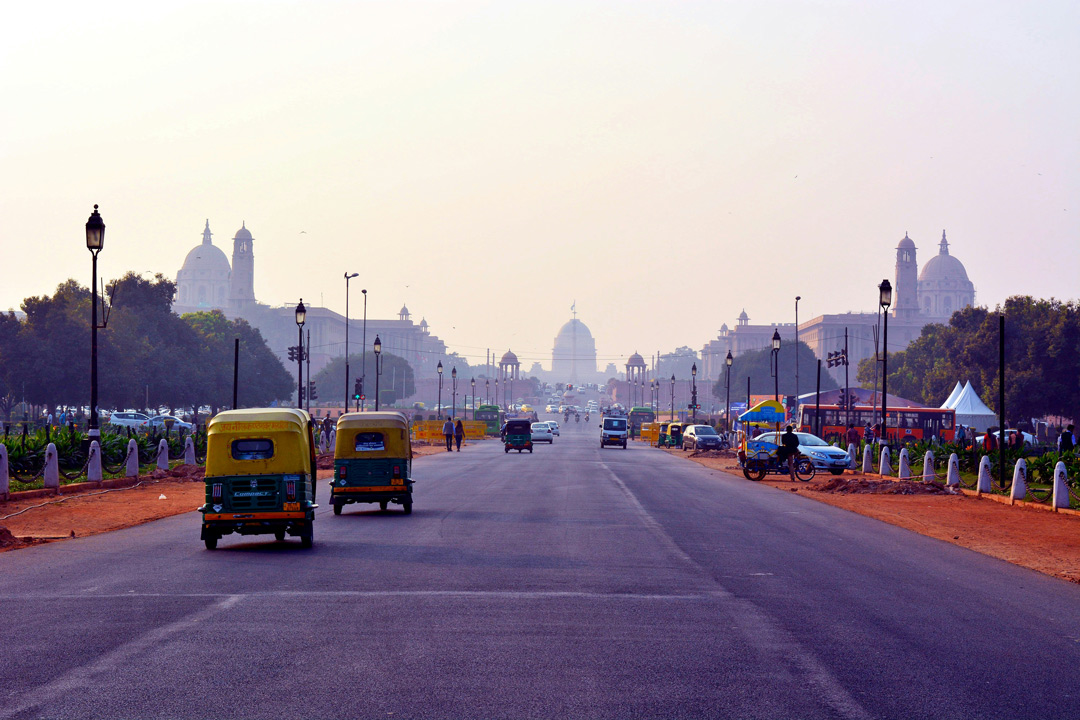
Distance: 472 km | Time: 9 to 10 hr | Altitude: 1500 m to 206 m
After spending time in Dharamshala and exploring Tibetan Culture and the Heritage sites of Kangra Valley, you will reach Delhi early in the morning with many memories.
Meals: NA
Night: NA
We understand that plans can change, but the booking amount is non-refundable due to the costs we incur in preparing for your tour or activity. If you wish to reschedule for a different date, we'll adjust it to the same package, providing you with the necessary flexibility. If you have paid the total amount but cancelled the package. You will be provided with a refund, as mentioned below:
Tours or activities may be cancelled due to unforeseen events beyond our control, weather conditions such as heavy rain or storms, or government restrictions like sudden closures of specific areas. In such a scenario, we will provide an alternate tour or activity. However, no refunds will be provided.
Dharamshala Kangra Valley Package, The influences of the Katoch dynasty, the British Raj, and Tibetan refugees, enrich Dharamshala’s history. Initially impacted by the Katoch rulers, the city’s significance grew when it became a British military station in the 19th century, leading to the development of McLeodganj and Forsythganj. The Gurkhas, early settlers in the area, rebuilt the city after a devastating earthquake in 1905. Dharamshala’s transformation continued with the arrival of the 14th Dalai Lama in 1959, turning the city into a hub for Tibetan culture and the Government of Tibet in Exile. Today, Dharamshala is a culturally vibrant city with a rich historical legacy.
Dharmashala in Kangra Valley was under the rule of the Katoch Dynasty for a long time. The Kangra Fort, a few kilometres away from Dharamshala, was built by Katoch Emperors to safeguard many places around Kangra, including Dharamshala. Presently, the royal family has a residence in dharamshala named “Clouds End Villa”.
The administration of Dharmahsala came under British rule in 1850. During the Second anglo-sikh War, dharamshala was a cantonment for British troops who were posted to Kangra. The official cantonment was established later around a previous Hindu building called Dharamshala, a kind of shelter with very few facilities usually made for pilgrims or travellers to stay for the night.
In the 19th century, the Britishers were divided into regiments and moved to Dharmashala. Mcleodganj and Forsynthganj were the two parts of Dharmahshala, named after two divisional commissioners of the British Raj. Later, the civilians started settling around the places near Dharamshala.
By 1860, the 66th Gurkha Light Infantry was relocated to Dharamshala. They settled near the Bhagsu Falls, and a small settlement eventually grew into fourteen Gurkha Platoon villages. This Gurka platoon was later christened the 1st Gurkha Rifles. They had performed heroic feats during the world wars. The settlement of Gurkhas was a significant event in the area’s history. The Gurkhas, also known as Bhagsuwalas, were deeply connected to their sacred temple, Bhagsunath. Their resilience and determination were further demonstrated when they played a crucial role in reconstructing the city after a massive earthquake in the early 20th Century.
By 1904, Dharamshala had become the centre for trade, commerce, and critical official duties of the British in the Kangra district. The city was very alluring, with beautiful gardens adorned with imported plants. However, this paradise was almost destroyed by a 7.8-magnitude earthquake in April 1905. The disaster took a heavy toll on the local population, with thousands of people, including the British, losing their lives and many more sustaining injuries. The earthquake also caused substantial damage to the city, with numerous buildings, including the Bhagsunag temple of the Gurkhas, being almost wholly destroyed. Despite these losses, the city was rebuilt, and the Platoon of 1st Gurkha Rifles continued to operate from there. However, the district headquarters was eventually moved to Shimla.
Dharamshala, a city that had to wait about half a century to witness something more exciting and recordable in its history, underwent a remarkable transformation. The British declined the summer capital, so the place became a subtle town. However, in 1959, the 14th Dalai Lama took refuge in India after the failure of an uprising in 1959 against the Chinese communist party in Tibet. This change, along with the flow of Tibetan refugees, turned the upper part of Dharamshala into mini Tibet and started calling it Dhasa, resembling the capital of Tibet “Lhasa”.
Tourism in Dharamshala Kangra Valley Package
The city’s beautiful weather and landscape attract many tourists worldwide to Dharamshala. It is also a favourite weekend destination for people in nearby towns like Shimla, Delhi, Chandigarh, and Pathankot.
Owing to its rich history, the city also receives visits from history students and people interested in the past. His Holiness Dalai Lama fled to India with the Tibetan people and settled in Upper Dharamshala. Tourists and people who follow Buddhism come to Dharamshala yearly to meet the Dalai lama and participate in Buddhist festivals.
Trekking is the main activity in Dharamshala. The city offers a variety of trekking paths, such as the Triund Trek, Thatharana Trek, Kareri Lake Trek, SNowlineTrek, Indrahar Pass Trek, Kundli Pass Trek, and Minkiani Pass Trek, each with its unique charm. Dharamshala also offers a walk past the mountain to the valley on the other side.
Culturally, Dharamshala is a treasure trove. Its scenic beauty provides a feast for the eyes of Uladhar Rangesand. Hence, Dharamshala has become a city that contributes to the economy and commerce of the state through its rich cultural heritage.
Religious Spots at Dharamshala during the Dharamshala Kangra Valley Package
Masroor Rock Cut Temple: These monolithic rock-cut temples at Masrur (765 m MSL), excavated from a single sandstone ridge, are about 48 km from Kangra Town. These temples form a complex with a ‘girbhagriha’ (sanctum sanctoram) in the centre, possibly twenty-four smaller shrines surrounding it, and a large reservoir excavated on the east. Dedicated to Lord Shiva and facing ritual east, the temple complex preserves a rich vocabulary of north India’s early Nagar temple style. Though these temples suffered extensive damage from the 1905 Kangra earthquake, they are still in ruins. The temple complex still preserves many sculptures and art motifs on its walls, ceilings, and pillars. Noteworthy among these is the image of Shiva on the ‘lalatbimb’ (lintel) of the eastern doorway of the sanctum, goddess Ganga and Yamuna on either side of the entry, and elsewhere, three-faced Siva, Skand, Ishan, Vishnu, Vaikuntha (Vishnu with additional head of a boar and a loin), human Varah, (Vishnu incarnated in human form with boar head), Indra, Durga, Karttikeya, Surya on the horse-drawn chariot, Buddha seated on ‘simhasana’, eight dikpalas (guardians of directions), unified scheme suggests that the temples were to follow a flying Gandharvas with jewelled crowns, celestial musicians ‘sarvatobhadra’ plan (accessible from all cardinal directions). The excavation of temples, however, could not be completed for unknown reasons.
The central temple, on plan, boasts a unique architectural layout that will intrigue any architecture enthusiast. It houses a girbhagriha (sanctum) that can be accessed through a mandapa (a pillared hall) from the east, flanked by two faux ‘access sub-shrines’. Two ‘passageway sub-shrines’ complemented these with steps leading to the roof. The exterior of the temple complex is equally intriguing, with an ‘angle’, an ‘oblong’, a ‘corner’, and a detached ‘cruciform’ sub-shrine in one of the four quarters. This pattern may have been replicated in the other three quarters. On elevation, the temples are crowned by symmetrically rising individual shikhara (spire), adorned with broad chaitya (horseshoe arch) dormer motifs and graduated suknasika (aquiline-nose features) on four sides, each with three superimposed bhadramukhas (divine faces). The tallest shikhara in the centre stands proudly over the girbhagriha.
Diamond-like lozenges, etc. The Masrur temple complex was probably built by a paramount ruler of the ancient Jalandhar kingdom of Punjab plains or a Katoch ruler under the supremacy of Yashovarman, a king of Kanauj. The temple complex is now known as Thakurdwara (an abode of Vishnu), as it enshrines stone images of Ram, Lakshman, and Sita, dated to circa 19th century CE. Precisely when the temple complex attained a Vaishnav identity is not known.
The Masrur monolithic temples are not just architectural marvels; they hold a significant historical value that invokes a sense of reverence. They represent early rock-cut traditions in India and reflect Gupta classicism in the treatment of sculptures. Stylistically, the temples can be dated to circa 8th century CE. Recognising their outstanding archaeological value, the Archaeological Survey of India declared the temple complex a protected monument of national importance in 1913.
Bhagsunag Temple: This temple, dedicated to Lord Shiva, is 2 km from Mcleodganj. It was constructed in 1800 and has a rich history. During that time, it was worshipped mainly by 14 Gukha platoon villages in Dharamshala. The Temple’s architecture and associated stories glimpse the region’s religious and cultural heritage.
Kunal Pathri Temple: One of the Shaktipeeths close to lower dharamshala dedicated to the goddess Kalpeshwari. The construction of the TempleTemple has a good mythological story. It is believed that Lord Shiva carried her around after Sati’s death. As he did, her body parts fell at various locations known as shaktipeeths. Her head(‘Kunal or Kapal’) is believed to fall near Dharamshala, where it got its name as Kunal Pathri Temple.
Chamunda Temple: This TempleTemple is about 16 km from Dharamshala. It is situated on the banks of River Baner. The Temple Temple is dedicated to the goddess Kali.
Museums and Galleries at Dharamshala during the Dharamshala Kangra Valley Package
Naam Art Gallery -Sidhbari Dharamshala: A feather added to Dharamshala’s vibrant culture. It exhibits paintings by Elizabeth Buschmann. The artist is renowned for her acrylic and watercolour paintings. Oil paintings by Alfred W. Hallett also add glamour to the gallery. Elizabeth Buschmann hails from Germany and has studied painting in London and Paris. Dharamshala is proud to put up its paintings apart from the USA, Germany, Scotland and Switzerland exhibitions. Apart from Dharamshala, she has held exhibitions in New Delhi and Mumbai.
Scenic Spots at Dharamshala during the Dharamshala Kangra Valley Package
Dal Lake: It is one of the scenic spots in McLeodganj. Its banks are covered with Deodar and rhododendron trees, which bloom red in the spring. The lake is about 2 kilometres from McLeod Ganj Main Square and is easily accessible via a cemented path. The lake attracts the maximum number of tourists during the Dal Lake Fair.
Triund: Triund is about 7 kilometers from McLeod Ganj. Triund is famous for trekking, and there is no road to reach triund. The only option is to go for a 3 to 4 hr trek to this beautiful destination on the top of a mountain. There are options for staying in Guest houses and camps provided by locals and travel companies.
Naddi: Due to its geography, Naddi is a scenic village famous for sunset and sunrise views. It lies 5 km from Mcleodganj and about 10 km from Dharamshala. The route between Mcleodganj and Naddi is also very scenic through the woods. Naddi village is also the starting point for the famous trek of Guna Devi.
Bhagsu Waterfall: Situated near Bhagsu temple, this 10m high waterfall is a famous tourist attraction. You must trek 20 to 30 minutes from Bhagsu temple to reach it. Bhagsu is also the starting point for the Triund Trek. A famous cafe, Shiva Cafe, is near this waterfall. The best time to visit this waterfall is in the late monsoon season or early winter when the water is at its sweet spot.
Fort of Kangra during the Dharamshala Kangra Valley Package
Kangra Fort, the ancient Trigarata, strategically located in Kangra Valley, was one of the leading hire states of Punjab during the pre-Mohammedan period. It was part of the kingdom of Jalandhar. When the plains of Punjab fell to the Mohammadans, the kings of Kangra, confined to their territories in the hills, held a strong position in the Kangra fort, which repeatedly precluded Muslim invaders.
The Fort of Kangra is famous and renowned for its strength, stability, solid fortifications and impregnability. It occupies a long, narrow strip of land in the fort between the Majhi and Ban Ganga rivers. Its walls are upwards of 4 k.m. in-circuit, but its strength is not in its works but in the cliffs overhanging. On the side of the ban ganga, the two rivers rise to about 300 feet. The only accessible paint is on the land side towards the town but a few hundred feet, across which a deep ditch has been lawn at the fort of the walls.
The Darshini door, flanked by the defaced status of the Ganga and Yamuna, gave access to a courtyard along the south side facing north. There, the shrines Lakshmi Narayana Sitla and Ambika Devi were located, and a staircase led up to the palace.
The fort of Kangra, a symbol of resistance, was taken by the irresistible Mahmud of Ghazni in a.d. 1009. In 1337, it was captured by Muhammad Tughluq, and again, in 1351, by his successor, Firoj Shah. However, it did not fall into the Mohammedan power permanently until 1622, when Jahangir conquered it after a fourteen-month siege. He garrisoned it with his troops and appointed a Mughal governor to keep the turbulent hill chiefs in check. The surrounding district, except the imperial demesne, remained in the hands of the Katoch rajas, who claimed descent from the ancient rulers of Trigarth.
In the second half of the 18th century, the Mughal power rapidly declined; Raja Sansar Chand-II succeeded in 1786 in recovering the ancient fortress of his ancestors. By taking his ambitious designs too far, he comes into conflict, first with the neighbouring hill chiefs, then with the Gurkhas and finally with Ranjeet Singh, who was compelled to surrender the Kangra fort in 1809. it was occupied by the Britishers in 1846.
Below is the Itinerary for itinerary for the Dharamshala Kangra Valley Package. The trip lasts 5 days and 4 nights, with 2 nights in Dharamshala, and includes pick-up and drop-off in Delhi.
Day 1: Late evening departure from Delhi to Dharamshala (9-10 hrs).
Day 2: Arrival in Dharamshala; Mcleodganj sightseeing (Bhagsu Waterfall, Bhagsu Temple, St. John Church, Dalai Lama Temple, Namgyal Monastery).
Day 3: Dharamshala sightseeing (Tea Gardens, Cricket Stadium, Norbulingka Institute, Gyuto Monastery).
Day 4: Kangra sightseeing (Masroor Rock Cut Temple, Kangra Fort); evening departure to Delhi.
Day 5: Early morning arrival in Delhi.
Kangra Valley is a picturesque town in Himachal Pradesh, primarily famous for Dharamshala. The Dhauladhar Ranges are in the backdrop of Kangra Valley. The region also has one of the most beautiful cricket stadiums (HPCA, Himachal Pradesh Cricket Association Stadium)
Wherever the stay is included, dinner will be provided during check-in to that stay, and breakfast will be provided the following day. No meals are provided when you are travelling during the day or overnight.
You can book the Dharamshala Kangra Valley Package with Uncia Trails. They are locals and know the area well, so that you will get a better deal.
In Mcleodganj, you can visit Bhagsu Waterfall, Bhagsu Temple, St. John Church, the Dalai Lama Temple, and Namgyal Monastery. In Dharamshala, key attractions include the Tea Gardens, Shaheed Samarak, Cricket Stadium, Museum, Norbulingka Institute, and Gyuto Tantric Monastery.
The package includes a short trek to Bhagsu Waterfall, which can be done without assistance. Additional adventure activities, such as paragliding, zipline or camping, are not included but can be arranged separately.
Kangra is one of the districts of Himachal Pradesh, whereas Dharmashala is in this district. But the catch is that most people identify all places near Dharmahsala as Dharamshala, which is more popular due to Tibetan influence and natural beauty.
Kangra is around 17 km from Dharamshala. You can take three routes to reach dharamshala. The first route is Kangra - Mataur - Bagli - Sakoh- Dharamhsala. The second is Kangra - Mataur - Gaggal - Sakoh - Dharamshala, and the third is Kangra - mataur - Chetru - Sheela CHowk - Dari - Dharamshala. The length and time taken on all three routes are almost identical.
More than one day is needed to explore dharamshala. You should have at least 2 to 3 days to visit all the places near Dharamshala properly. If you need to explore other places near Dharamshala or go on a trek, you need 3 to 5 days.
Kangra is around 460 km away from Delhi. You can easily book a Volvo bus from Delhi to Kangra overnight. Another option is to fly. Kangra has an airport you can reach by flight in just 2 hours.
By Air: The nearest airport to Kangra is Kangra/Gaggal Airport (DHM), also known as Kangra or Dharmashala Airport, 10 km away from Kangra and 13 km from dharamshala.
By Road: Kangra is well connected to major cities like Delhi (461 km), Chandigarh(229 km), Shimla(227 km), and Pathankot (80 km). Volvo AC buses can quickly be taken from all these significant locations. A 4-lane highway is now constructed between Shimla and Kangra and Pathankot to Kangra.
By Train: The nearest major railway stations near Kangra are Pathankot (PTK) and Amb Andaura (AADR), which are 80 and 74 km away. After that, you can hire cabs, local buses or roadway buses to reach Kangra. Moreover, Kangra also has a narrow gauge railway station named Kangra Railway Station (KGRA). This railway station has limited facilities, and the toy train takes a long time. So it's better to skip it unless you want to enjoy the ride of a heritage railway line laid down by the Britishers.
According to locals, Maharaja Susharma Chandra of the Katoch Dynasty built the Kangra Fort around 3500 in the 4th century AD. The Katoch dynasty was a royal Rajput family from the Kangra state.
The Kangra Fort contains three temples: Ambika Devi, Shitla Mata, and Lakshmi Narayan. Additionally, a temple devoted to the Jaina Tirthankaras houses a stone image of Lord Adinath.
The Masroor Rock-Cut Temple, also known as the Masroor Temple or Thakurdwara, is an architectural marvel with a fascinating history. This temple complex is carved out of a single sandstone ridge and dates back to around the 8th century CE. The origins of this temple have yet to be discovered; it is believed to have been constructed by a ruler of the ancient Jalandhar kingdom or a Katoch ruler under the influence of Yashovarman, the king of Kanauj. The temples were likely intended to serve as a grand religious and cultural centre, but for unknown reasons, the construction was never fully completed. The temple complex is known for having survived the devastating 1905 Kangra earthquake, although it sustained significant damage. Despite being in ruins, the temples still stand as a testament to the skill and vision of the artisans who crafted them.
The rock-cut temples at Masrur in Kangra were likely built by a paramount ruler of the ancient Jalandhar kingdom of the Punjab plains or by a Katoch ruler under the supremacy of Yashovarman, a king of Kanauj. The exact details of their construction and the builders' identity are not precisely known, but they reflect early rock-cut traditions and Gupta classicism in their design.
Staying in a monastery takes work; however, you can get permission to stay there sometimes. If you get permission, you can experience the monk's lives and the unique ways of maintaining the monasteries.
Yes, dharamshala stadium is open to the public. When no cricket matches are hosted in the stadium, you can go inside by buying a ticket, which costs around INR 50. The stadium is open between 12:00 am to 5:00 pm
Leave a review